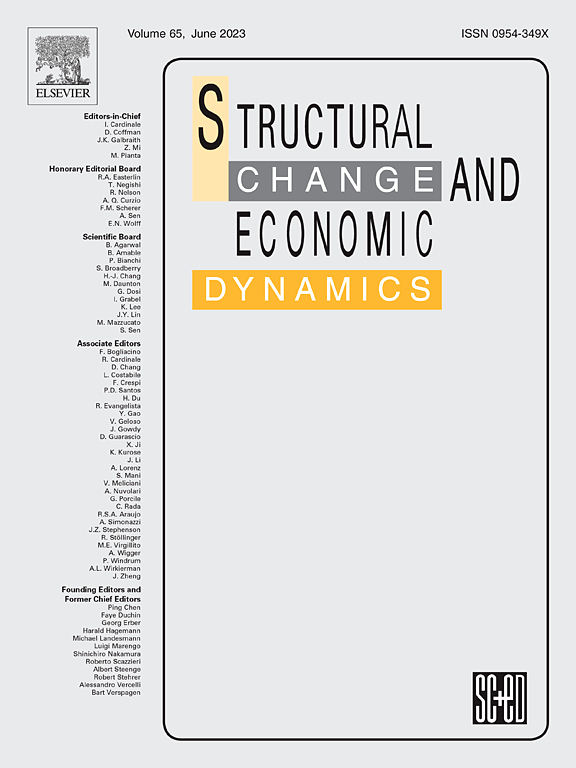Patterns of subordination in the Global South between natural resources, foreign ownership and financial inflows
IF 5.5
2区 经济学
Q1 ECONOMICS
引用次数: 0
Abstract
Peru and Kazakhstan have often been presented as success stories—respectively, in Latin America and Central Asia—due to their sustained economic growth since the early 2000s. Despite their distinct histories, geographies, and cultural contexts, both countries exhibit comparable economic features: a heavy reliance on natural resource exports, significant foreign ownership in strategic sectors, and persistent dependence on external financial inflows. These shared characteristics raise concerns about a common pattern of dependency and subordination. While the 2003–2014 commodity supercycle enabled both countries to reduce poverty and transition into upper-middle-income status, this growth was primarily driven by extractive sectors and fuelled by foreign capital. Beneath this apparent success lies a more troubling reality: structural current account deficits, driven by negative primary income balances despite strong trade surpluses. These deficits were increasingly financed through pro-market policies aimed at attracting foreign direct investment, particularly in copper extraction in Peru and oil in Kazakhstan. Although commodity prices have experienced partial revivals, long-term sustainability remains questionable—especially given rising social unrest and mounting geopolitical tensions. This paper explores the financial underpinnings of this subordination by analysing balance of payments dynamics and international investment position statistics for both countries and further contrasting it with Mexico as a third country. In doing so, it critically assesses the viability of development strategies based on natural resource extraction and foreign capital inflows, situating the analysis within broader geopolitical and historical frameworks.
全球南方国家在自然资源、外国所有权和资金流入之间的从属关系
由于秘鲁和哈萨克斯坦自21世纪初以来的持续经济增长,它们经常被视为拉美和中亚的成功案例。尽管两国的历史、地理和文化背景不同,但两国都表现出类似的经济特征:严重依赖自然资源出口,战略部门的大量外资所有权,以及对外部资金流入的持续依赖。这些共同的特征引起了人们对依赖和从属的共同模式的关注。虽然2003-2014年的大宗商品超级周期使两国得以减少贫困并向中高收入国家过渡,但这种增长主要是由采掘部门推动的,并得到了外国资本的推动。在这种表面上的成功背后,隐藏着一个更令人不安的现实:结构性经常账户赤字,尽管贸易顺差强劲,但主要收入余额为负。这些赤字越来越多地通过旨在吸引外国直接投资的亲市场政策来提供资金,特别是在秘鲁的铜矿开采和哈萨克斯坦的石油开采方面。尽管大宗商品价格出现了部分回升,但长期可持续性仍存在问题——尤其是在社会动荡加剧和地缘政治紧张局势加剧的情况下。本文通过分析两国的国际收支动态和国际投资头寸统计数据,并进一步将其与作为第三国的墨西哥进行对比,探讨了这种从属关系的金融基础。在此过程中,它批判性地评估了以自然资源开采和外国资本流入为基础的发展战略的可行性,并将分析置于更广泛的地缘政治和历史框架内。
本文章由计算机程序翻译,如有差异,请以英文原文为准。
求助全文
约1分钟内获得全文
求助全文
来源期刊

Structural Change and Economic Dynamics
ECONOMICS-
CiteScore
9.60
自引率
4.90%
发文量
159
期刊介绍:
Structural Change and Economic Dynamics publishes articles about theoretical, applied and methodological aspects of structural change in economic systems. The journal publishes work analysing dynamics and structural breaks in economic, technological, behavioural and institutional patterns.
 求助内容:
求助内容: 应助结果提醒方式:
应助结果提醒方式:


